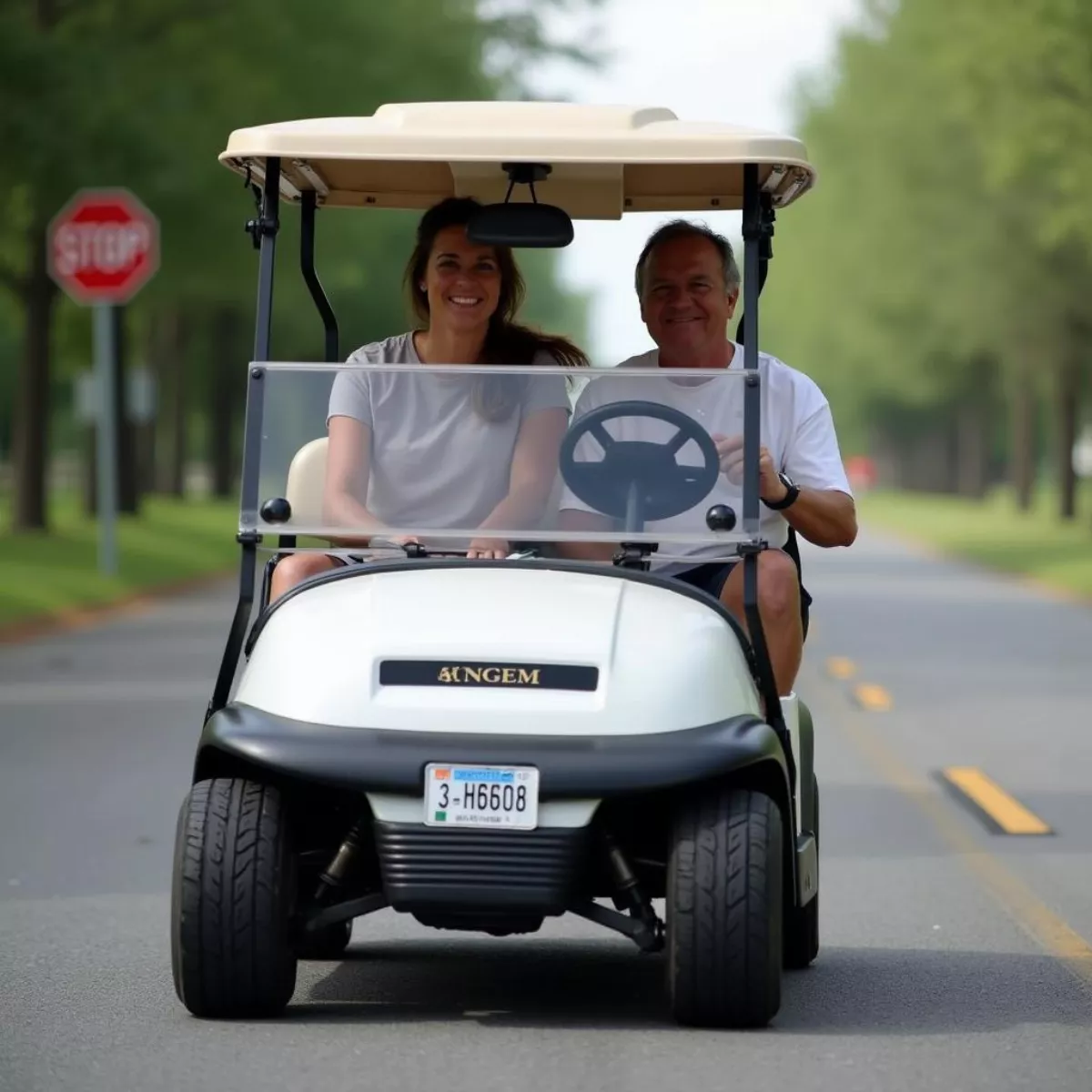Golf carts are not just for the greens anymore! Many Floridians have discovered the convenience of using golf carts for local errands and short trips because of their agility and compact size. However, if you want to embrace the open roads in your golf cart, you need to ensure that it meets specific legal standards. Let’s explore how to make your golf cart street legal in Florida!
What Does Street Legal Mean?
Before diving into the specifics of making your golf cart street legal, let’s clarify what “street legal” means. A vehicle that is street legal can be driven on public roads and must comply with specific state laws, including safety standards and equipment requirements.
Step-by-Step Guide to Make Your Golf Cart Street Legal
1. Understand the Definition of a Low-Speed Vehicle (LSV)
In Florida, golf carts can be classified as Low-Speed Vehicles (LSV) if they meet certain criteria.
- Speed Limit: Must be capable of speeds between 20-25 mph.
- Weight Restrictions: Cannot exceed 3,000 pounds.
- Safety Features: Must have the following safety features to be classified as an LSV:
- Headlights
- Taillights
- Turn signals
- Stop lights
- Rearview mirrors
- Windshield
- Seat belts
 LSV Safety Features
LSV Safety Features
2. Make Necessary Modifications
If your golf cart doesn’t meet the requirements for an LSV, you’ll need to make some modifications. Here’s a checklist:
- Install a Windshield
- Add Lighting: Ensure that your headlights, taillights, and turn signals are functioning.
- Install Mirrors: A rearview mirror is essential, while side mirrors can enhance visibility.
- Safety Features:
- Ensure your cart has approved seat belts.
- Consider adding additional safety features like a horn.
3. Complete the Required Paperwork
After making the necessary modifications, the next step is to obtain the paperwork:
- Fill Out the Application: You’ll need to complete the Florida Department of Highway Safety and Motor Vehicles (DHSMV) application for LSV registration.
- Provide Proof of Insurance: You must have liability insurance for your golf cart. Ensure your insurance policy covers golf carts specifically.
 Golf Cart Insurance Documents
Golf Cart Insurance Documents
4. Visit Your Local DMV
You’ll need to visit your local Department of Motor Vehicles (DMV) office to finalize the registration process.
- Documents Required:
- Completed application
- Proof of insurance
- Sales tax payment (if applicable)
- Associated fees for registration
- Obtain a Title: If your golf cart doesn’t have a title, you may need to apply for one.
5. Get Your Golf Cart Registered
Once your cart is modified and you have completed all necessary paperwork, you will register it as an LSV. Here’s what happens:
- Receive License Plates: After registration, you will receive license plates that must be displayed on the vehicle.
- Pay Applicable Fees: Licensing and registration fees will apply.
6. Follow Local Laws
Once your golf cart is street legal, it’s essential to follow local laws and regulations. This may include:
- Speed Limits: LSVs generally must adhere to a maximum speed of 25 mph.
- Road Restrictions: Be aware of which roads and areas allow LSV travel.
“Knowledge is key! Always ensure you’re informed about local traffic regulations and restrictions.”
 Street Legal Golf Cart on Road
Street Legal Golf Cart on Road
Safety Tips for Driving Your Street Legal Golf Cart
- Wear Your Seatbelt: Always wear your seatbelt for safety.
- Stay Visible: Use reflective materials if driving in low-light conditions.
- Obey Traffic Signals: Treat your golf cart as you would any other vehicle on the road.
Key Takeaways
- Understanding LSV Criteria: Ensure your golf cart meets the definition and requirements of a Low-Speed Vehicle.
- Modifications Required: Install headlights, taillights, a windshield, and seat belts to meet safety standards.
- Complete Necessary Paperwork: Fill out the application, provide proof of insurance, and pay applicable fees at the DMV.
- Adhere to Local Laws: Know the driving laws applicable in your area regarding speed limits and road usage.
With these steps, you can enjoy the freedom of driving your golf cart legally on the streets of Florida!
Frequently Asked Questions (FAQs)
1. Is there a difference between a golf cart and an LSV?
Yes! A golf cart is typically limited to golf courses, while a Low-Speed Vehicle (LSV) can operate on public roads if it meets specific requirements.
2. Can I drive a golf cart on highways in Florida?
No, golf carts are generally not allowed on highways. They can only be driven on roads with speed limits of 35 mph or less.
3. What is the cost to make my golf cart street legal?
Costs vary based on modifications and registration fees. Be prepared for expenses related to insurance and any necessary equipment.
4. Do I need a special license to drive a street-legal golf cart?
No special license is required to drive an LSV, but operators must be at least 14 years of age and hold a valid driver’s license.
5. Is insurance mandatory for a golf cart?
Yes, you must have liability insurance to operate a golf cart legally on public roads in Florida.
6. What happens if I drive my golf cart without it being street legal?
Driving an unregistered vehicle can result in fines, impoundment of the vehicle, and increased insurance premiums.
7. Can I convert any golf cart to be street legal?
Not all golf carts can be converted; it must be capable of speeds between 20-25 mph and meet safety standards.
8. Where can I find more information about Florida traffic laws?
You can visit the Florida Department of Highway Safety and Motor Vehicles website for detailed information about traffic laws and regulations.
9. Are there restrictions on where I can park my street-legal golf cart?
Yes, you should follow local parking regulations just as you would for other vehicles.
10. Can I drive my street-legal golf cart at night?
Yes, however, ensure that you have functional headlights and taillights before driving after dark.
With this comprehensive guide, you’re all set to make your golf cart street legal in Florida! Enjoy your rides while abiding by the rules of the road and ensuring safety for you and others. Happy driving!

